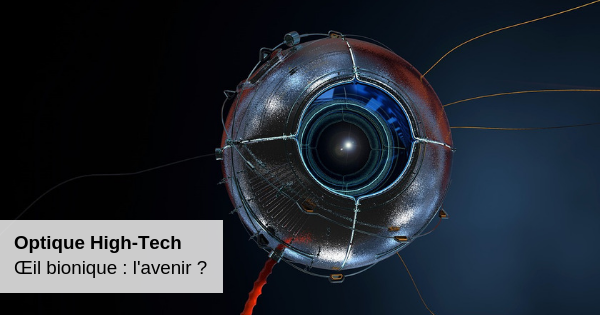Bionic eye: the future?

The term bionics refers the most nostalgic of us to the science fiction series of the 60s and 70s. However, biology and electronics research is sometimes able, in real life, to work miracles. So, is the bionic eye the future for the visually impaired?
Bionic eye: already promising results
Let's immediately correct the term: Bionic technology has not yet succeeded – or has not sought – to replace our eyes. We must therefore speak of a bionic visual device.
These devices do not restore sight for people with visual affliction . If the future holds perhaps a chance, it is not yet the case, but the technical and technological progress are already amazing.
We have repeatedly, on our blog, presented various innovations to revive the visual sensations lost by the visually impaired : lenses 2.0 , robotics and artificial intelligence , innovations against cataract or augmented reality .
Today, the technology associated with biology is to match the perception of light with brain interpretation.
https://www.youtube.com/watch?v=hIHu2v7TsFQ [/ embed]
For this, device, named Argus II , is presented as a retinal prosthesis , and consists of a camera, a mini-computer and an implant.
The camera, located in the mount, sends the images to the computer instantly and the latter transmits them to the implant, which will stimulate the nerve cells , then propagating the visual information captured to the brain.
[= Despite his retinal failure, the patient is then able to distinguish between forms and movements.
https://youtu.be/v5uKdOlEitc [/ embed]
Another pathology, AMD (Macular Degeneration) at Age ), is also subject to bionic technology. Beginning 2018, the bionic implant Prima , developed by Pixium Vision, was transplanted successfully on a 66 year old patient.
Thick of just 2 millimeters, Prima is a micro photovoltaic chip consisting of no less than 378 electrodes. It is implanted under the retina by surgery and allows to convert an infra-red signal , in the same way as Argus II, with camera and microcomputer.
[Embed] https : //youtu.be/QPxIwbHVWZg [/ embed]
Still a lot of progress to make
Of course, these devices can only be used by patients who do not have blindness at birth, especially because the perceived forms require interpretation from the brain, and without knowledge beforehand, it seems compromised.
But even for a patient who has lost his sight, rehabilitation is long and demanding . Because acquiring or regaining autonomy can take time and a lot of work.
Bionic technology is therefore unquestionably dedicated to major innovations, especially in terms of visual health . [ =]
Especially since, recently, researchers have succeeded, thanks to the 3D printing , to create a true " bionic eye ", going beyond the stage of the video device … [ =]
So when will the "real" bionic eye arrive?
[Embed] https://www.youtube.com/watch?v=bzmJ26wxKZk [ / embed]


